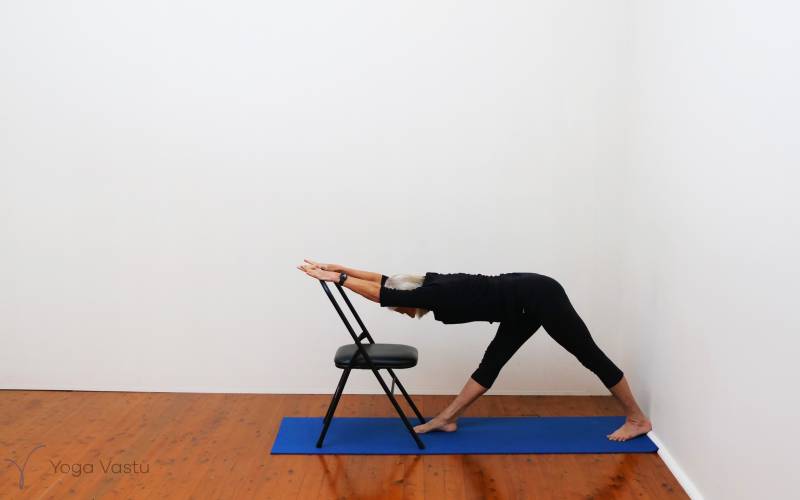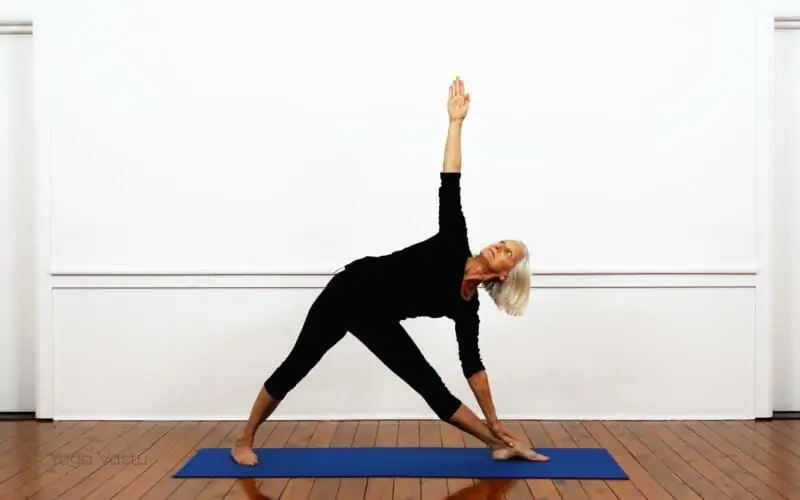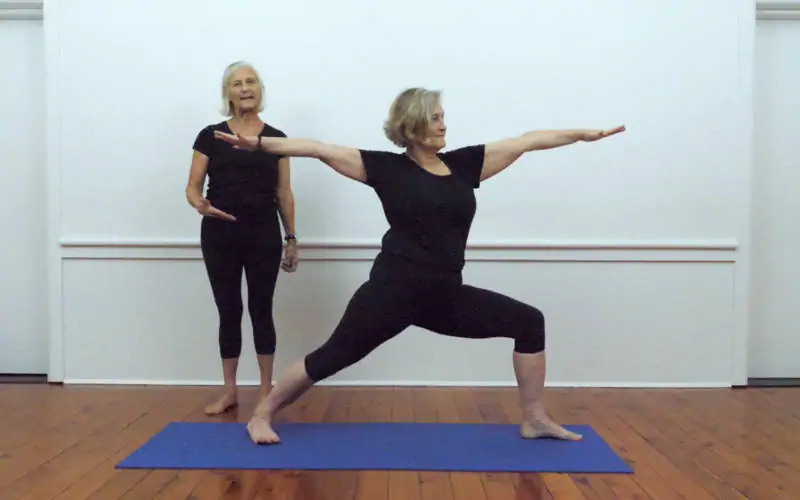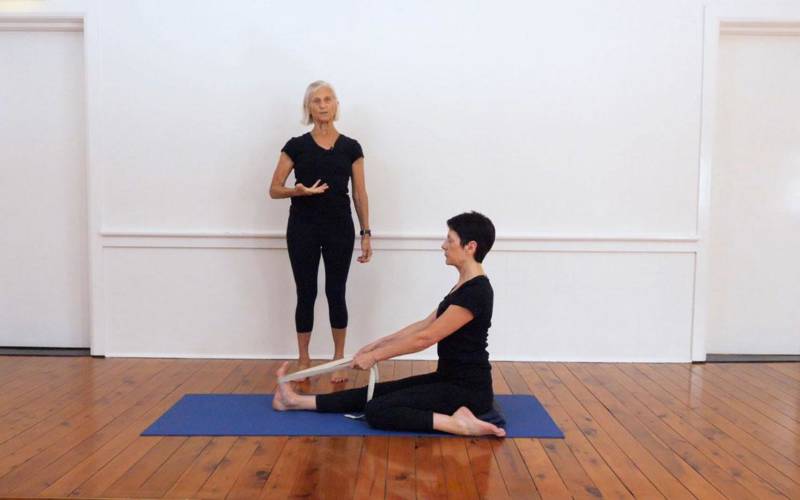How to perform Legs-Up-the-Wall Pose
Bring your hips up to the wall and lift your legs up against it so that they're perpendicular to the floor. You can use a bolster or other form of support under your hips and lumbar spine to incorporate a mild backbend into the pose.
What is Viparita Karani?
This is a calming and soothing posture, suitable for students of all levels.
Folded blankets are typically placed close to the wall, to cushion your spine and provide your lumbar region with a gentle bend. However, you can practice it without support as well. To enter this pose, you sit sideways right next to the wall. As you go to lie down, shift to the side, and walk your feet up the wall.
When in this pose, let your eyes go soft, relax, and focus on how your breath moves through your body. Soon you will start to notice how all the fatigue that you’ve been harboring in your body, especially in your legs, will start to dissipate. Your mind will start to quieten and it will become easy to let go of any tension.
When to use Viparita Karani?
Being a deeply restorative posture, Viparita Karani is typically used during a restorative sequence or at the end of your practice. It helps shift the blood circulation down towards your pelvic and abdominal regions, making it good for soothing digestive issues or menstrual cramps.
It is said that, due to its calming nature, this pose can help restore balance in the body and rid the practitioner of various ailments and pains. For this reason, this is one of the few poses that can be practiced when sick or right after a meal. It relieves nausea and heaviness in the stomach, but is also beneficial for anyone who is feeling overly edgy or anxious, as it naturally slows down the heart rate and calms the nervous system.
















































